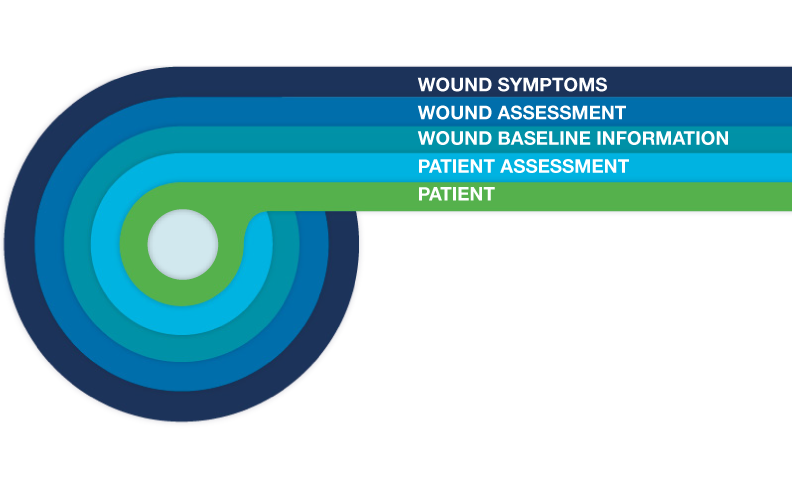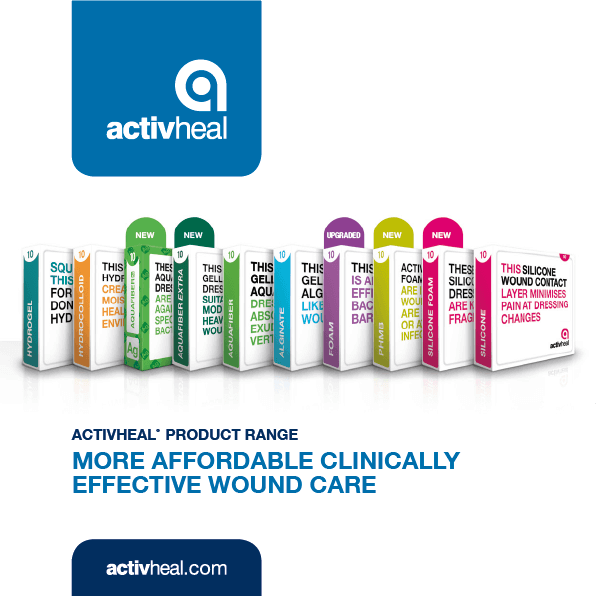Wound Assessment

Wound Assessment simplified
Accurate wound assessment should include a comprehensive patient history, aetiology of the wound, condition of the wound bed and periwound area including the amount, colour, and consistency of exudate as well as signs of infection (Ousey & Atkin, 2013).
Patient assessment
A holistic assessment of the patient is essential to identify the causative or contributory factors and to highlight issues that could delay wound healing. The following factors must be considered when choosing an appropriate plan of care.
General health information: Medical history; age; medication and allergies; other diseases (diabetes, vascular diseases, immune systems that are compromised); nutritional status; smoking; alcohol; obesity; mobility; continence; pressure sore risk; oxygen deficit/anaemia; skin sensitivity and integrity; stress anxiety; psychological aspects – impact the wound has on the emotional, physical, and social aspects of the patient’s quality of life; mental health; emotional health; social health and support network.
Recognition of these factors will either delay or promote the wound healing process. Successful wound healing is dependent on the patient’s ability to heal, not the dressing used (Vuolo, 2009).
WOUND ASSESSMENT
Accurate wound assessment is vital to give a successful resolution and uncomplicated wound healing. It provides valuable information to enable informed decisions about a patient and their wound.
Wound baseline information
- Number of wounds
- Location – can identify/determine cause and act as an indicator for potential complications
- Cause e.g. trauma, pressure, vascular insufficiency, neuropathy, other
- Type/classification – e.g. pressure ulcer, skin tears, burns etc
- Duration – date of occurrence, length of time, Acute/Chronic
- Treatment aim – healing, symptom management etc
- Planned reassessment date
wound assessment
Size, width, length and depth is important to be measured and documented so that the progress of the wound can be measured over time.
Undermining and tunnelling refer to tissue destruction underlying intact skin and along the margins of the wound. Tunnelling course or pathway can extend in any direction from the wound, resulting in dead space.
Wound bed tissue type. A wound can consist of different tissue types, which can be categorized by name and/or colour. Record the percentages of the different tissue types.
Wound edge (margin) can indicate the stage of healing and provide information as to the wound aetiology. The margin type that is good to see is skin that is smooth and adheres firmly to the wound bed.
Wound assessment is a fundamental aspect of wound management. It is also important to reassess the wound at regular intervals and to change treatment as required.
Assessment leads to appropriate treatment aims, and to correct use of a wound care product, which will improve patient outcomes and quality of care.
To continue reading more about this topic, register for access to the ActivHeal Academy. It’s FREE!
The ActivHeal Academy covers multiple wound care topics including dressing selection and infection. The Academy has over twenty hours of wound care education to support your Continuing Professional Development, including our Tissue Viability Society endorsed higher tier modules.
References:
- Ousey, K. Atkin, L. (2013) Optimising the patient journey made easy. Wounds UK, 9, 2, June
- Recognition of these factors will either delay or promote the wound healing process. Successful wound healing is dependent on the patient’s ability to heal, not the dressing used (Vuolo, 2009).
Find out more about The ActivHeal Academy
SIGN UP TO OUR NEWSLETTER OR FOLLOW US ON SOCIAL MEDIA FOR THE LATEST UPDATES. Do you want to receive future updates from activheal® and find out how we can support you further?
#heretohelp

FIND OUT MORE ABOUT OUR FULL RANGE OF ADVANCED WOUND CARE PRODUCTS.

CONTACT US FOR MORE INFORMATION
Only applicable in the EU.
The ActivHeal website is only applicable for CE marked countries





